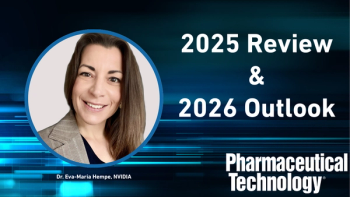
Equipment and Processing Report
- Equipment and Processing Report-01-21-2015
- Issue 1
Designing Single-Use Assemblies for Sterile Filling
Careful design of a single-use assembly by both the supplier and end user together can mitigate risks and create fitness for the intended use.
Single-use technologies can offer significant benefits compared with traditional stainless-steel systems. The key driver is overall time savings. There are risks associated with single-use technologies, however, that can include product loss and questions around sterility assurance and product safety. These risks are magnified in the filling operation because of its closeness to the product in its final form. A thorough evaluation of the assembly design process, manufacture, and use can assist in identifying and mitigating these risks. By mitigating these risks, single-use assemblies can be successfully implemented in all process steps including formulation, filtration, and filling.
Assembly design
In a traditional stainless-steel system, the end user has significant control over the design, construction, use, and maintenance of the system. When implementing a single-use system, the dynamics of the situation change and the relationship between the supplier and the end user needs to be a partnership. The design of the “system” becomes a collaborative effort between the two parties within the manufacturing capabilities of the supplier. In this article, design is defined as the selection of each individual component, how the components connect to create an assembly, how the assembly performs in the process, and ultimately how the assembly impacts the final drug product.
The design guidelines should follow good engineering practices, such as ASTM E2500, with consideration for items such as reduction in the number of parts, error-proofing assembly design, avoiding tight tolerances, ease of assembly, and using modular products. It is also beneficial to apply quality-by-design concepts during specification and assembly design, including critical process parameters (CPPs) and any prior production experience. As typical assemblies are custom designs that may include custom components, project timelines can range from 9 to 18 months depending on scope and complexity. Often, a good portion of this time is required for drawing revisions, prototype testing, and drawing finalization in conjunction with equipment testing and validation. These requirements need to be accounted for in the project planning process.
During assembly design, ease of operator use, product yield, sterility assurance, and product safety should be considered to help minimize the risks associated with single-use assemblies. By combining these attributes with key needs for formulation, filtration, and filling, a technically sound design can be created by the supplier and the end user. Key needs for formulation include:
- Efficient component introduction for both solids and liquids
- Robust and operationally appropriate mixing
- Minimization or elimination of bioburden
- Representative sampling with ability to perform an aseptic disconnect
- Temperature control (if required).
Key needs for filtration include:
- Effective filter flushing and/or wetting
- Maintenance of downstream sterility
- Well-characterized materials of construction
- Ability to perform a pre-use post-sterilization integrity test (if required)
- Ability for single or redundant filter design, as dictated by the end user
- Filter placement inside or outside of the isolator, as dictated by the end user.
Key needs for filling include:
- Well-characterized materials of construction
- Ability to make a sterile connection between the outlet of the final sterilizing-grade filter and the filling assembly
- Optimized header bag and manifold design
- Dose accuracy.
By creating a sound initial design together, fit for intended use will not be based solely upon verification after installation but will be designed into each assembly.
Conclusion
With a thorough evaluation of the assembly design process, manufacture, and use, risks associated with single-use assemblies for final sterile filling can be identified and mitigated. By mitigating these risks, single-use assemblies can be successfully implemented in all process steps including formulation, filtration, and filling operations.
About the Author
Sue Walker is global product manager for Mobius Final Fill at EMD Millipore, 80 Ashby Road, Bedford, MA 01730, Sue.Walker@emdmillipore.com.
For further information, read the
Articles in this issue
almost 11 years ago
Barrier Films Protect Pharmaceuticalsalmost 11 years ago
Blow-Fill-Seal Equipment Can Be Installed in Cleanroomalmost 11 years ago
Horizontal Flow Wrapper Packages Single Blow-Fill-Seal Vialsalmost 11 years ago
Filling Pre-sterilized ContainersNewsletter
Get the essential updates shaping the future of pharma manufacturing and compliance—subscribe today to Pharmaceutical Technology and never miss a breakthrough.




